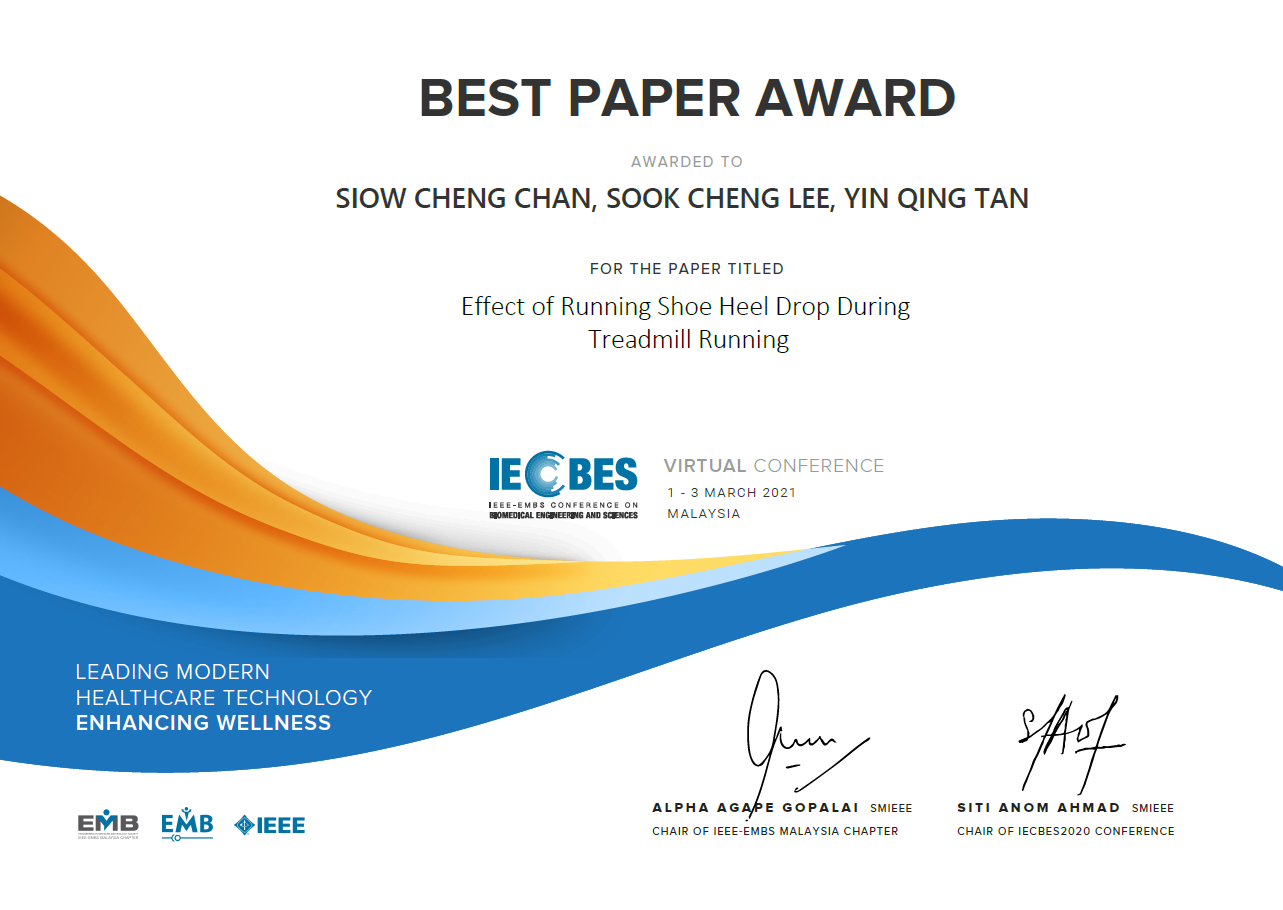
The 2021 IEEE EMBS Conference on Biomedical Engineering and Sciences (IECBES 2021) was held virtually on March 1 – 3 2021. This conference is a premier biomedical engineering and sciences conference in this region, which have carefully established strategic partnerships with key authorities and figures in the field to share cutting-edge research and innovation to facilitate and push boundaries in biomedical engineering and sciences research.
In the IECBES 2021, the submitted paper led by the CHST member, Dr Chan Siow Cheng with the title, “Effect of Running Shoe Heel Drop During Treadmill Running” was selected as the Best Paper Award in the area of ports Engineering and Technology.
Abstract: The shoe heel drop is defined as the heel-to-toe drop of the shoe and becomes one of the characteristics for choosing a pair of suitable running shoes. Higher heel drops which has more cushioning system is postulated to improve runner performance and to protect runners against high impact force. However, there is currently no evidence that different heel drop developed for the modern-day running shoes emerging on the market could improve running efficiency and injury prevention. In this study, a biomechanical analysis will be performed on non-trained leisure runner to investigate the association between shoe heel drop and the alteration of the lower extremity kinematic and kinetic parameters. 15 male healthy subjects were recruited to run on H/P Cosmos Instrumented Treadmill with three different conditions: (i) barefoot, heel drops of (ii) 4mm (D4) and (iii) 10mm (D10). Wilcoxon signed-rank test was performed to compare the differences across the shoe heel drop. The result revealed that compared to barefoot condition, step length, stride length and cadence significant greater in the footwear with heal conditions (p<0.05). There is no significant difference between conditions in the vertical ground reaction force (vGRF) and knee joint moments (p>0.05).




